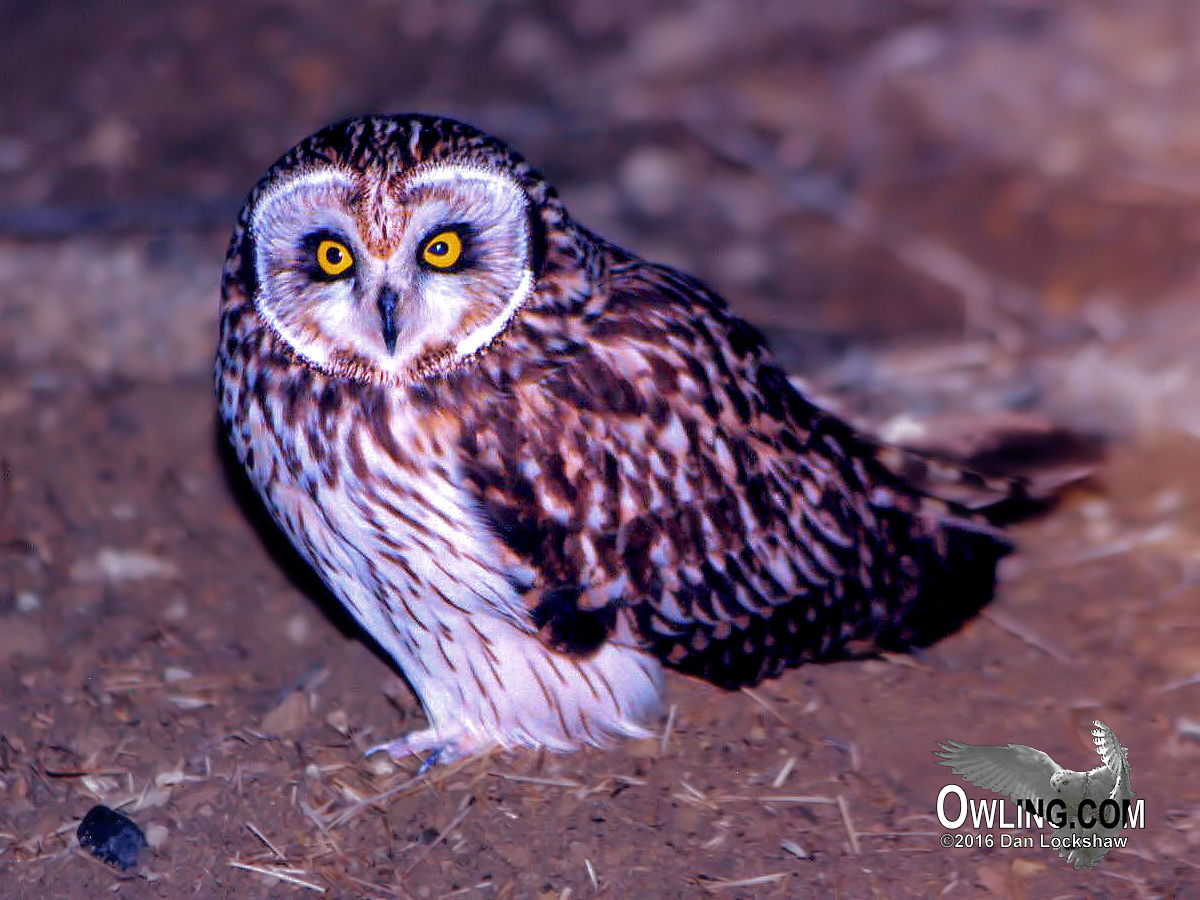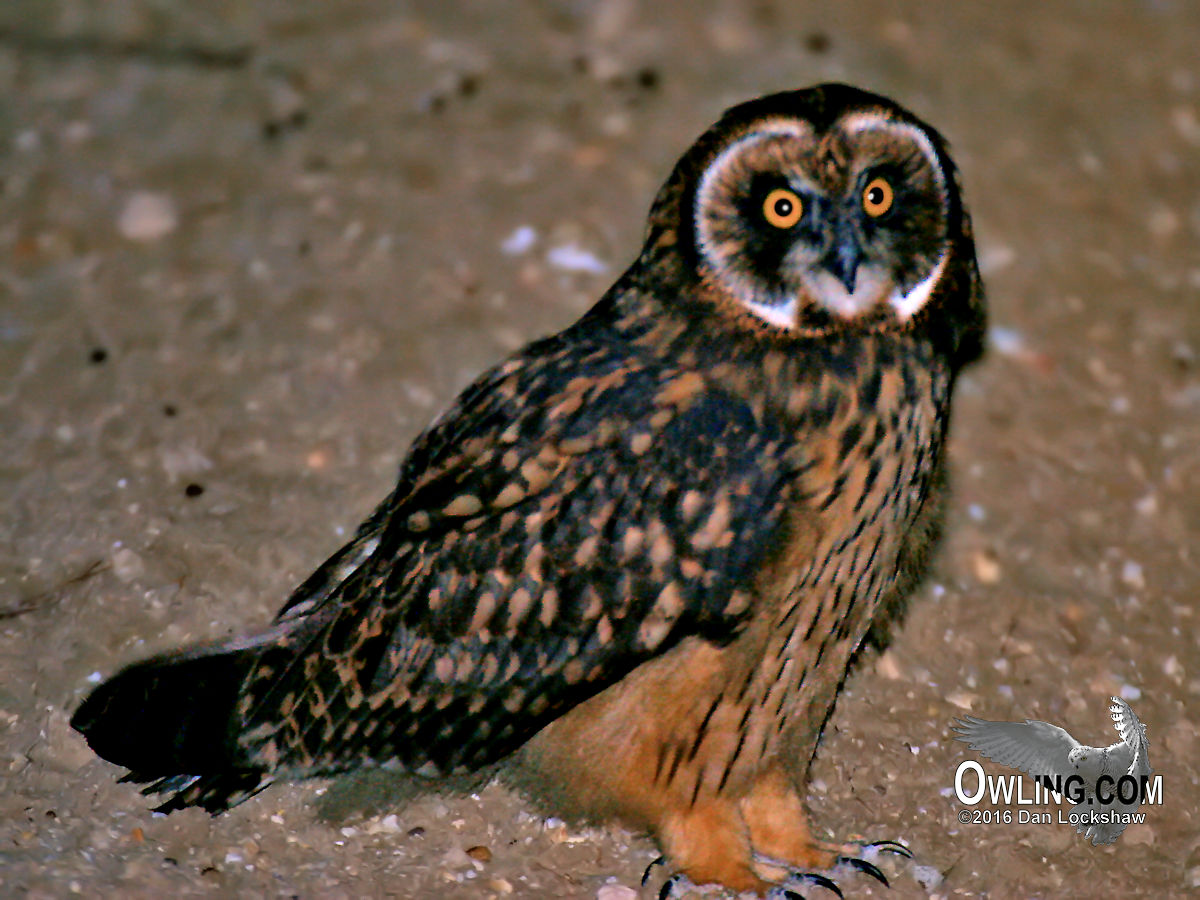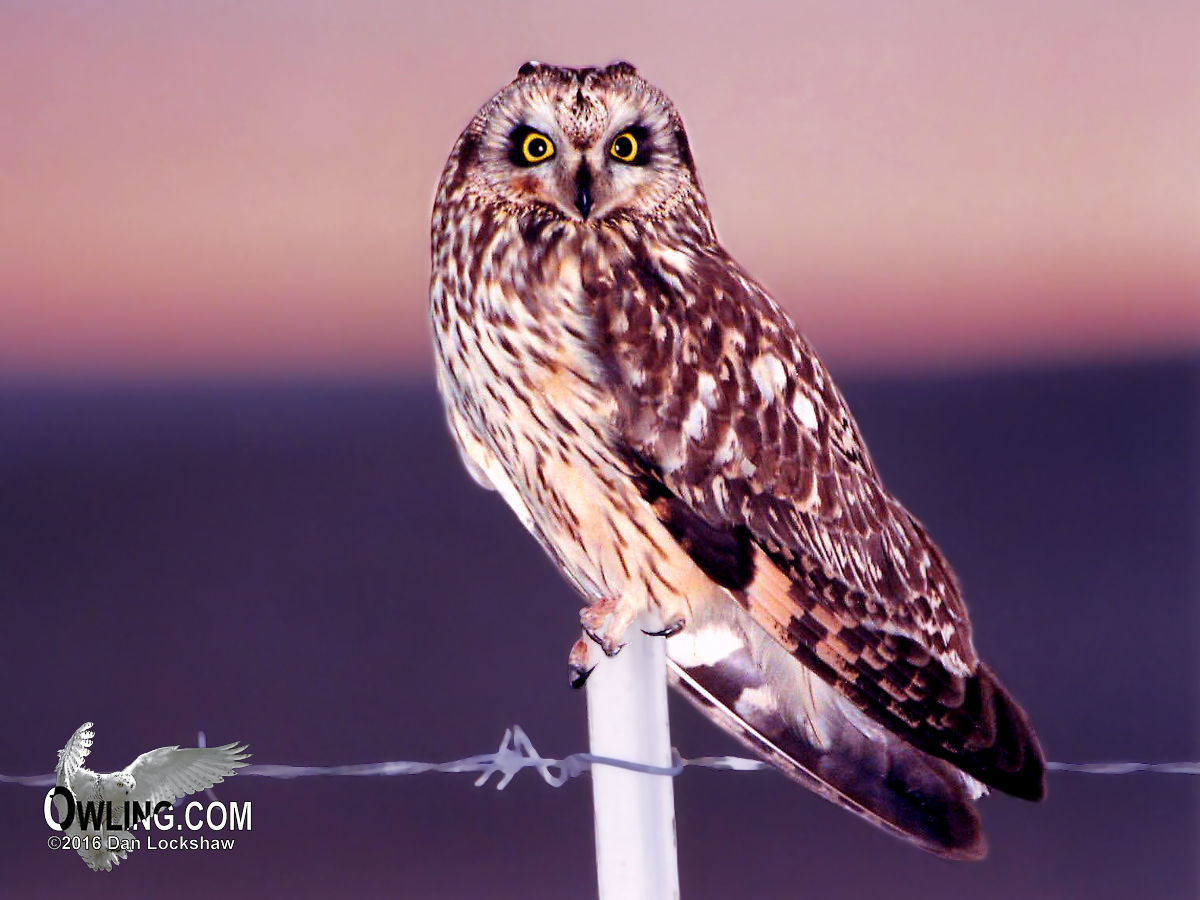Short-eared Owl Biology
A Reference for North and Central American Owls
Name: Short-eared Owl – Asio flammeus
Other Common Names: Prairie owl: Marsh Owl; Bog Owl; Northern Short-eared Owl.
Subspecies: There is only one race of Short-eared Owl recognized in North America. The short-eared Owl is wide spread across the world and has a total of ten recognized races, one of these is endemic to the Hawaiian Islands but will not be reviewed here.
A. f. flammeus is found from coast to coast in North America. Its breeding range is from Alaska to Central California in the west and Northern Quebec and Newfoundland to Northern Virginia in the east. In its winter range it moves into all of the Southern U. S. and south as far as Southern Mexico.
Measurements and Weights:
Wingspan: 38 – 44 in.
Length: 13 – 17 in.
Tail: 5.4 – 6.3 in.
Average Weight: Male: 11 1/4 oz.
Average Weight: Female: 13 1/2 oz.
Description: This is a medium sized owl that, as the name implies, shows only small ear tufts. These appear more as ridges, that begin above the bill curving up and over the forehead and crest, and show when the owl is in a defensive posture. The Short-eared Owl has a large round off-white facial disk with fine brown tinges and black around the eyes. The under parts are white to buffy with dark brown streaks. The backside is deep brown with white mottling and in birds that are lighter overall may also have a mix of tannish-brown mottling. The irises are lemon yellow and the bill is black. The Short-eared Owl has a distinctively moth-like flight.
Young: The juvenile is brown above with buff tips on the back feathers. The facial disk is brown-black with white mustache and beard. The under parts are a warm buff color.




